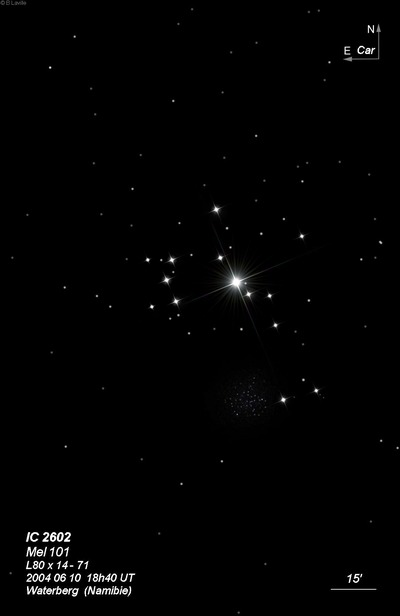tet Car Cluster
tet Car Cluster

Nicolas-Louis de Lacaille discovered IC 2602 = Lac II-9 in 1751-1752 with a 1/2-inch telescope at 8x during his expedition to the Cape of Good Hope. He recorded "The star Theta Navis, of the third magnitude or less, surrounded by a large number of stars of 6th, 7th & 8th magnitude, which resemble the Pleiades." The nickname "Southern Pleiades derives from this description. Solon Bailey also found the cluster on a photographic plate in 1896 using a 1" (f/13) Cook lens at the Arequipa station. The discovery was reported in "A Catalogue of Bright Clusters and Nebulae" (Annals of Harvard College Observatory, Vol LX, No. VIII) and Bailey was credited with the discovery in the IC.
300/350mm - 14.5" (4/4/16 - Coonabarabran, 73x and 147x): beautiful, very large cluster, centered 12' E of a mag 5.5 star. Roughly 120-150 stars are resolved, depending on the assumed size. There is no distinct boundary so the size is pretty arbitrary but most of the brighter stars are within a 8'-10' circle. Many of the stars are arranged in long chains and loops. The brightest mag 9.7 star is at the west end, but the majority of the stars are 12-13 magnitude.
Notes by Steve Gottlieb